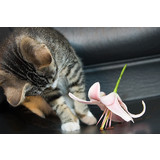Deathly Lillies
Author: Courtney Date Posted:29 July 2016

Lillies are a common flower here in Australia because of their beautiful colours and sizes.
As beautiful as these are, they are lethal to the family cat! Contrary to many people's beliefs, if any part of the lilly (leaves, petals, stalk, petal & pollen) is consumed it can cause Lily Nephrotoxicity, not just the pollen. Unfortunately, if your cat is an outdoor cat it can be impossible to prevent them from straying to the neighbours patch of lillies. For this reason it is very important for Cat owners to recognise signs of Lily Nephrotoxicity so that any irreversable damage can be prevented.
Signs of Lily Nephrotoxicity
- Drooling
- Vomiting (pieces of plant in the vomitus)
- Loss of appetite
- Increased urination, followed by lack of urination after 1 to 2 days
- Dehydration
What to do immediately
- If your cat has recently eaten a lily and has not vomited, call your veterinarian to see if you should induce vomiting before bringing them to an animal hospital.
- Call the nearest animal hospital or the Pet Poison Helpline or Veterinary Clinic.
- The sooner they get treatment, the better their chances are for survival. And if you can, bring a piece of the lily plant to the hospital.
Finding a chewed-on lily plant or pieces of plant in the vomit allows for a definitive diagnosis as the toxic principle in lilies attacks the kidneys, blood and urine tests will be taken to evaluate kidney function.
If your cat has only recently ingested the plant material and has still not vomited, your veterinarian will try to induce vomiting. Activated charcoal will be given orally to absorb any toxin that might remain inside the gut. The key to survival is high volumes of fluids given intravenously (IV) to try and prevent dehydration and the kidneys shutting down. The fluids will be given for 1 to 2 days, while monitoring your cat's kidneys as well as urine output. Lack of urine production is a sign that the treatment was unsuccessful.
Again in this case too, Prevention is always better than cure! Make sure if you must have lillies at home with a Cat, ensure they are in a cabinet or in a closed off room so there is no way your furry monster can even be tempted!
Here are some photos of common lillies you may come across!



